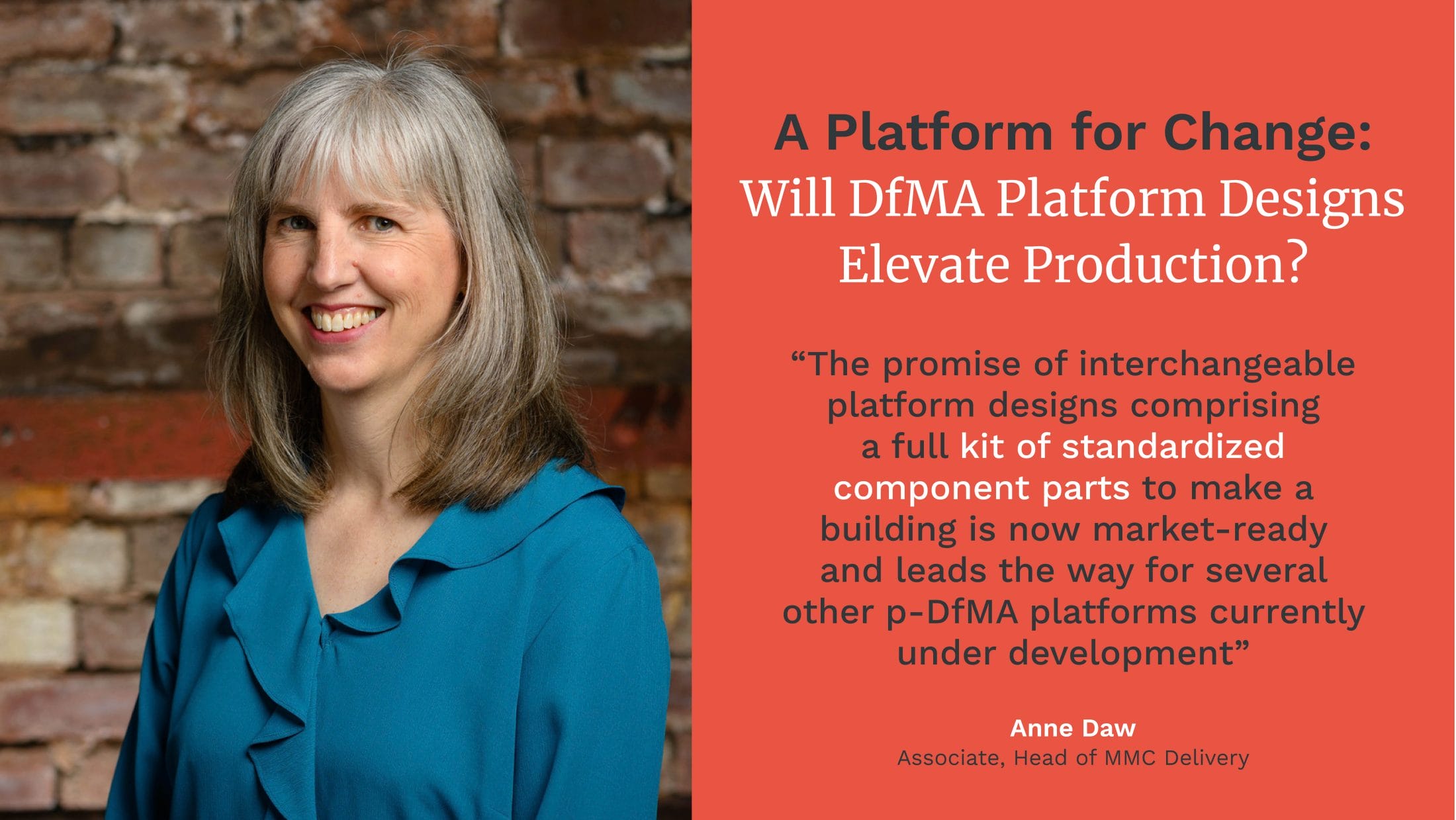
Platform Design for Manufacture and Assembly (p-DfMA) is bringing a step-change to construction. For years, the promise of DfMA has been that it will address the skills shortage in the industry, meet a growing demand, improve quality and safety, and reduce net carbon usage. To a large degree this has been the case, but struggles with capacity and productivity in the industry have kept the impact relatively low. Could that be changing? Could the emergence of (p-DfMA) design be a game changer for construction?
With the launch of the Seismic II Platform in March 2022, the promise of interchangeable platform designs comprising a full kit of standardized component parts to make a building is now market-ready and leads the way for several other p-DfMA platforms currently under development.
One novel approach to address the issue of industry capacity was the Seismic I project led by a consortium of Blacc, Elliott Group (now Algeco), McAvoy Group, Brydon Wood, and the Manufacturing Technology Centre. Seismic I aimed to increase production by making a standardized steel frame design that could be produced by multiple factories, increasing efficiency in the supply chain. (https://tc-catalogue.strongerstories.org/stories/seismic-i/)
With the launch of the Seismic II Platform in March 2022, the promise of interchangeable platform designs comprising a full kit of standardized component parts to make a building is now market-ready and leads the way for several other p-DfMA platforms currently under development. This eliminates one of the bottlenecks to DfMA in the construction sector by streamlining the supply chain and allowing production of the interoperable components to be produced by multiple manufacturers, before assembling together seamlessly into one building on site. This will help to dampen fluctuations in factory capacity by spreading the load among the supply chain, rather than creating bottlenecks by overburdening a single source. The complete standardization of the components and their assembly on site also creates efficiencies that result in better value, lower carbon impact, and faster completion that will benefit everyone.
HLM was fortunate enough to be able to assist with the development of the design guide as well as contributing to the standardized connection details and optimization of the PBBS Demonstrator’s component parts to meet sector specific requirements.
Seismic II is now joined by another p-DFMA platform for concrete construction. Laing O’Rourke’s Product Based Building Solutions (PBBS) Demonstrator (https://tc-catalogue.strongerstories.org/stories/product-based-building-solutions/) creates a platform for standardized components working with an innovative precast concrete frame. The system approach incorporates interoperability between each product while addressing sector-specific design requirements and significantly reducing carbon use. The precast frame uses bolted connections and does not require a screed, allowing for future deconstruction, reconfiguration, or re-use in a circular economy. The PBBS Demonstrator also shortens the time required for design configuration and assembly of the platform system with the inclusion of a design guide and assembly guide. The design guide, together with a developing digital configurator, will enable clients and architects to understand how to design to maximize the system’s potential. HLM was fortunate enough to be able to assist with the development of the design guide as well as contributing to the standardized connection details and optimization of the PBBS Demonstrator’s component parts to meet sector specific requirements.
The PBBS Demonstrator project also proves that a platform DfMA approach can achieve significant design freedom within a defined set of standardized component parts. Configurable façade components and variations in finishes create ample freedom for design exploration while giving the surety of quality, integrated detailing and efficient delivery resulting in reduced risk and higher productivity.
The step-change approach of designing and manufacturing platform based DfMA designs holds the promise of significantly improving construction sector productivity. The demonstrations of these two projects proves the concept and creates both a volumetric and panelized system to meet the DfMA requirements of nearly any sector. We believe that the introduction of platforms will give DfMA its long-awaited power assist to transform the construction industry.



